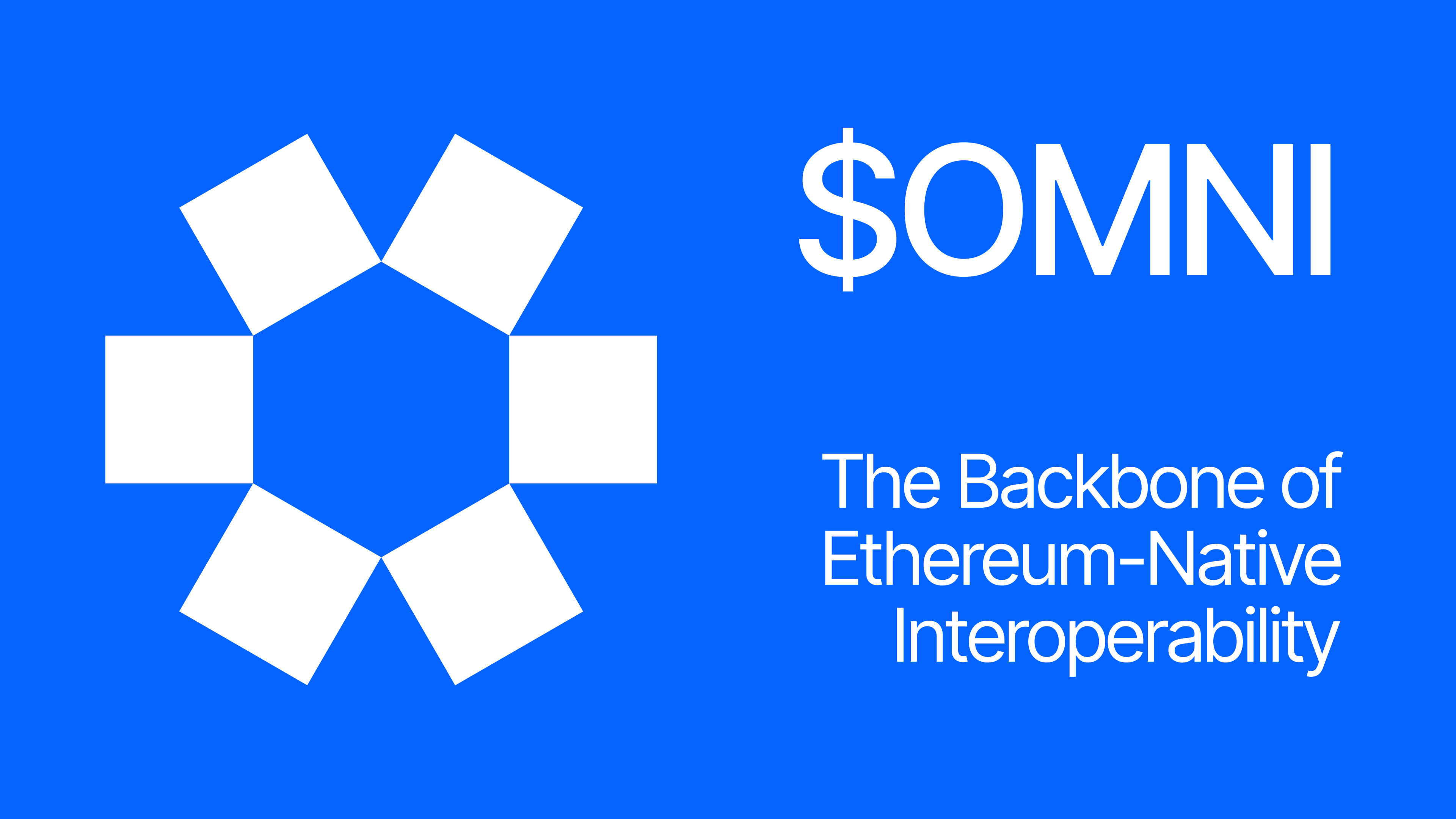$OMNI: The Backbone of Ethereum-Native Interoperability

In anticipation of the upcoming Omni Network (“Omni”) mainnet launch, we are excited to introduce the integral role of the protocol’s native token, $OMNI.
Background
Omni is an Ethereum-native interoperability protocol that establishes low latency communications between all Ethereum rollups. Omni offers a secure, performant, and globally compatible architecture that presents Ethereum as a single, unified operating system to both users and developers. For an in depth explanation of the entire Omni protocol, we encourage readers to explore the recently released Omni whitepaper. Today, we will direct our focus to $OMNI, the native token at the heart of Omni’s novel infrastructure.
$OMNI as Oil for Rollups
Smart contract networks employ a concept known as "gas" to determine the cost of transactions, with prices adjusting based on the complexity and the computational effort required. Similar to the versatility of natural gas in the physical world, this digital gas can be used to process any type of transaction on a smart contract network. While flexible in application, gas usage is confined to specific rollup environments. For example, despite both Rollup A and Rollup B accepting $ETH for gas fees, $ETH on Rollup A cannot be used as gas on Rollup B and vice versa. To overcome this limitation, users and developers require a tool that abstracts away these gas disparities.
$OMNI is the digital oil for Ethereum’s rollup ecosystem. Reflecting oil’s convertible properties in the physical world, $OMNI can be transformed into a gas resource that facilitates transactions on any Ethereum rollup. Omni accomplishes this by introducing a universal gas marketplace that simplifies the process of gas payments across all rollups.
A ”pay at source” fee model is used to support payments in the native token of the source network. Internally, these payments are converted into $OMNI, serving as the currency for compensating relayers that facilitate transaction processing on the target rollup on behalf of users. Alternatively, the protocol can accept $OMNI directly as a payment medium for gas across all rollups. This design establishes $OMNI as a gas abstraction primitive that is embedded into all cross-network transactions. Using these mechanisms, Omni’s universal gas marketplace simplifies transactions across rollups.
Omni Network Fees
In addition to facilitating cross-rollup transactions, $OMNI also serves as the native gas asset that powers the Omni EVM. The Omni EVM functions as a global orchestration layer for application instances across multiple rollups, allowing users and developers to initiate transactions and manage applications on any rollup from a single source. $OMNI provides an anti-sybil mechanism for transactions submitted to the Omni EVM, deterring spam and malicious activities such as denial-of-service attacks. $OMNI also serves as compensation for Omni validators investing computational power for transaction processing and network security. Users can choose to pay higher $OMNI fees to validators for priority transactions, thereby establishing a fee market based on $OMNI.
Network Governance
At launch, the initial Omni protocol will provide basic cross-rollup messaging functionality across a specified set of rollups. As Omni matures, $OMNI stakeholders will be responsible for various governance decisions such as protocol upgrades and additional developer features.
Reinforced Security
Omni achieves stronger and more stable security guarantees than existing interoperability protocols by deriving its cryptoeconomic security from restaked $ETH. Omni extends its security model further by incorporating staked $OMNI using a dual staking model. Effectively, the total cryptoeconomic security of Omni is determined by the combined value of restaked $ETH and staked $OMNI.
By implementing this dual staking model, Omni’s security scales across two dimensions. Restaked $ETH anchors Omni’s security to Ethereum L1, enabling it to grow in line with Ethereum’s own security budget. The addition of staked $OMNI builds upon this base, expanding Omni’s security alongside its own network activity. Collectively, these two complementary mechanisms provide robust and dynamic security guarantees for Omni, setting a new standard for secure interoperability for the Ethereum ecosystem.
Looking Ahead
Omni’s recent deployment of the Omni Omega testnet represents the final stress test for the protocol before its transition to mainnet. As Omni prepares for its mainnet debut, more information will be provided regarding $OMNI’s distribution, supply, and timeline.
THIS IS NOT AN OFFER TO SELL OR THE SOLICITATION OF AN OFFER TO PURCHASE ANY TOKENS, AND IS NOT AN OFFERING, ADVERTISEMENT, SOLICITATION, CONFIRMATION, STATEMENT OR ANY FINANCIAL PROMOTION THAT CAN BE CONSTRUED AS AN INVITATION OR INDUCEMENT TO ENGAGE IN ANY INVESTMENT ACTIVITY OR SIMILAR. YOU SHOULD NOT RELY ON THE CONTENT HEREIN FOR ADVICE OF ANY KIND, INCLUDING LEGAL, INVESTMENT, FINANCIAL, TAX OR OTHER PROFESSIONAL ADVICE, AND SUCH CONTENT IS NOT A SUBSTITUTE FOR ADVICE FROM A QUALIFIED PROFESSIONAL.
THIS DOCUMENT CONTAINS HYPOTHETICAL, FORWARD-LOOKING AND/OR PROJECTED FIGURES WHICH ARE NOT GUARANTEED AND ARE SUBJECT TO CHANGE; ACTUAL NUMBERS MAY VARY. OMNI MAKES NO REPRESENTATION OR WARRANTY, EXPRESS OR IMPLIED, AS TO THE COMPLETENESS, RELIABILITY, VALIDITY, OR ACCURACY OF THIS INFORMATION. THE CONTENT HEREIN IS NOT ERROR-FREE AND MAY CONTAIN INCORRECT INFORMATION. YOU AGREE AND ACKNOWLEDGE THAT ANY INFORMATION CONTAINED HEREIN IS SUBJECT TO CHANGE WITHOUT NOTICE. NO ADVICE OR INFORMATION, WHETHER ORAL OR WRITTEN, OBTAINED FROM OMNI, WILL BE CONSTRUED TO CREATE ANY WARRANTY OR REPRESENTATION REGARDING $OMNI OR THE FUNCTIONALITY OF THE OMNI NETWORK. FOR ADDITIONAL INFORMATION, PLEASE REFER TO OUR TERMS OF SERVICE.

